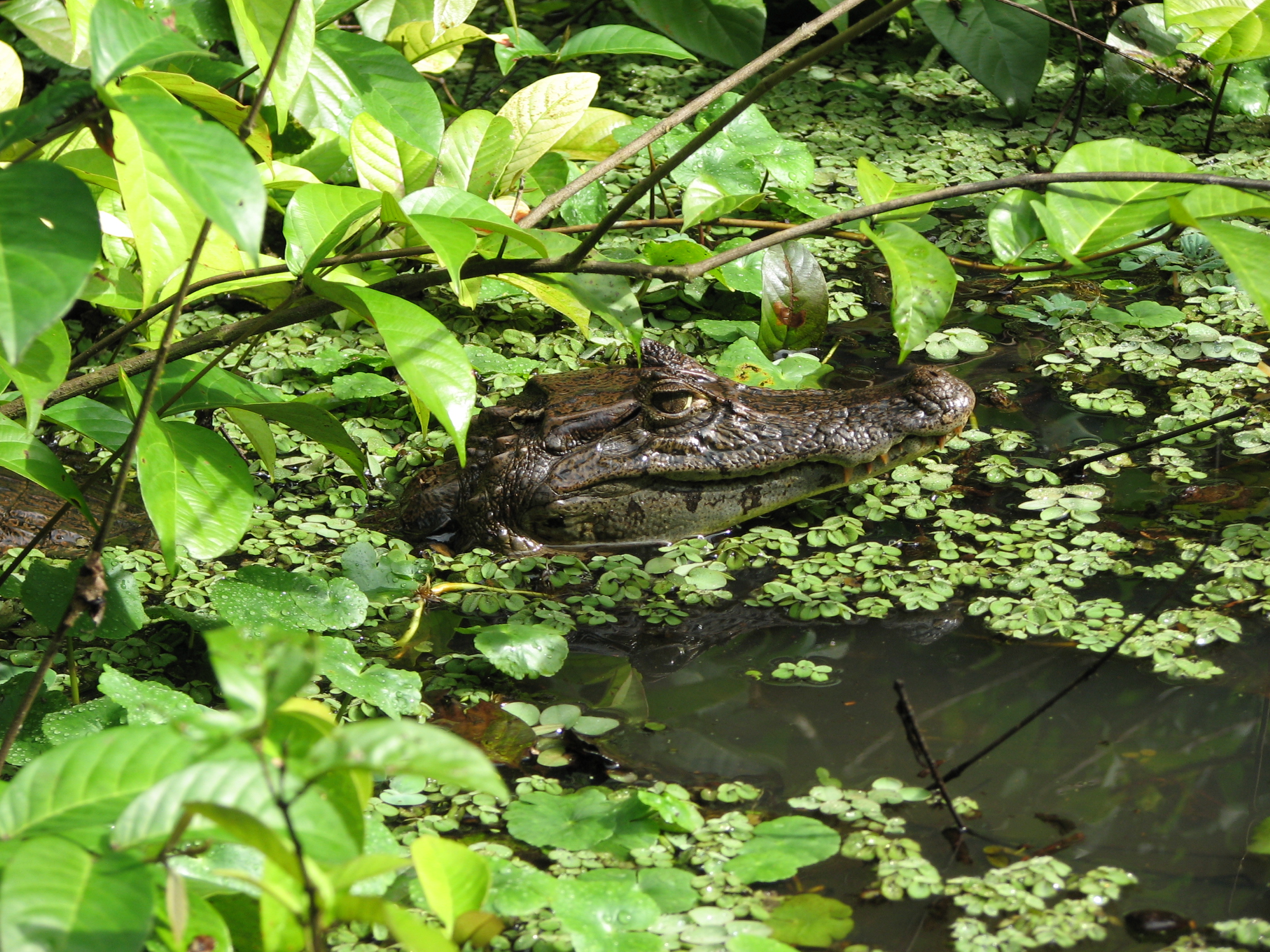New research finds pesticides in spectacled caiman blood, exposing the impact of heavily sprayed plantations
Globally, retailers have a soft spot for Costa Rican bananas. The Central American country is the biggest provider of the staple fruit in the United Kingdom, contributing 25% of its banana imports in 2007, and maintaining its place over the years as a top exporter to the United States. But researchers in a recent study have established that run-off from banana plantations is harming the caimans that glide stealthily through Costa Rica’s conserved waters.
The country’s dependence on banana agriculture as a top ranking export has resulted in an expanse of monoculture across the northeastern parts. The susceptibility to pests that can plague single crops—together with sometimes lax environmental enforcement—has encouraged the liberal spraying of pesticides, and their frequent reapplication when tropical rains sluice the plants.
Unfortunately for aquatic creatures, the Rio Suerte flows through this high-density banana cropland, channelling run-off from the sprayed fruit downstream and into a key conservation area further south. This wilderness refuge, the Tortuguero National Park, is home to spectacled caimans, whose polluted blood first brought the findings to light.
Paul Grant, study author and a biologist from Stellenbosch University in South Africa, says he has always felt an affinity for crocodilians, but that it was the spectacled caimans’ importance in river ecosystems that placed them at the heart of the research, published today in Environmental Toxicology and Chemistry. The reptiles are widespread in Central America, long-lived, and high up the food chain, making them important “sentinels of ecosystem health”, says Grant.
Taking their cue from occasional reports of fish kills in the area, the researchers caught 14 adult caimans and took blood samples from them, using animals from both inside and outside the national park (the reptiles are difficult and expensive to catch, hence the relatively small sample size). Their distance from the banana plantations varied, some inhabiting areas close by, and others occupying more pristine waters further away, like those in Tortuguero National Park. Grant discovered nine pesticides in their blood, seven of which were banned in 2011.
“What I found was that all caimans [regardless of distance] had pesticide burdens in them”, he explains. The closer they were to plantations the higher the toxic load was, but caimans within protected waters also carried pesticides, suggesting that even the conservancy’s rivers could be affected. Proximity to plantations seemed to worsen bodily health as well. “Caiman captured near banana plantations were thinner than those in more pristine areas”, says study co-author Peter Ross.
This ill health may be a direct result of the pesticides in their blood, or a spin-off of the river-borne toxins in their prey. Run-off from plantations appears to be the main culprit, says Ross, although pesticides may be airborne as well.
As for the seven banned pesticides that were detected, these could indicate illegal pesticide use, or just the highly persistent residues of previous sprayings—the latter presenting its own distinct threat. Either way, damage done to apex predators like the spectacled caiman could result in untold impacts on the ecosystem.
Yet the research on those 14 specimens represents only one part of a larger picture. “The fact that spectacled caimans in this study have pesticide burdens is an indication that other aquatic organisms are at risk of some exposure”, Grant says. There may be consequences for the entire ecosystem, the paper shows.
An important factor in this scenario is the famously low price of bananas. It’s well known that their uncompromised cheapness is associated with a host of inequities affecting plantation workers in countries like Costa Rica. By the same token, low prices might be weakening environmental management in banana-growing countries, as farmers fight to increase productivity by means of intensive spraying, to make up for small profits.
A price boost could relieve the pressure on high productivity, with the extra revenue used to enforce environmental regulations, so reducing the discharge of toxic agricultural soup, Grant suggests. Ross adds that, “There is little question that the application of better practices on banana plantations would help reduce the risk of impacts both near the plantations, and in the more remote national park.”
In 2009, the Fairtrade Foundation released a report that states: “Bananas are the third most valuable product sold in UK supermarkets—only petrol and lottery tickets outsell them.” It’s a symptom of their availability and affordability, so deeply at odds with the fact that the fruit is farmed so far away. In light of this unrecognised consumer privilege, Grant says: “I think there’s room for paying a little bit more.”
Related articles








